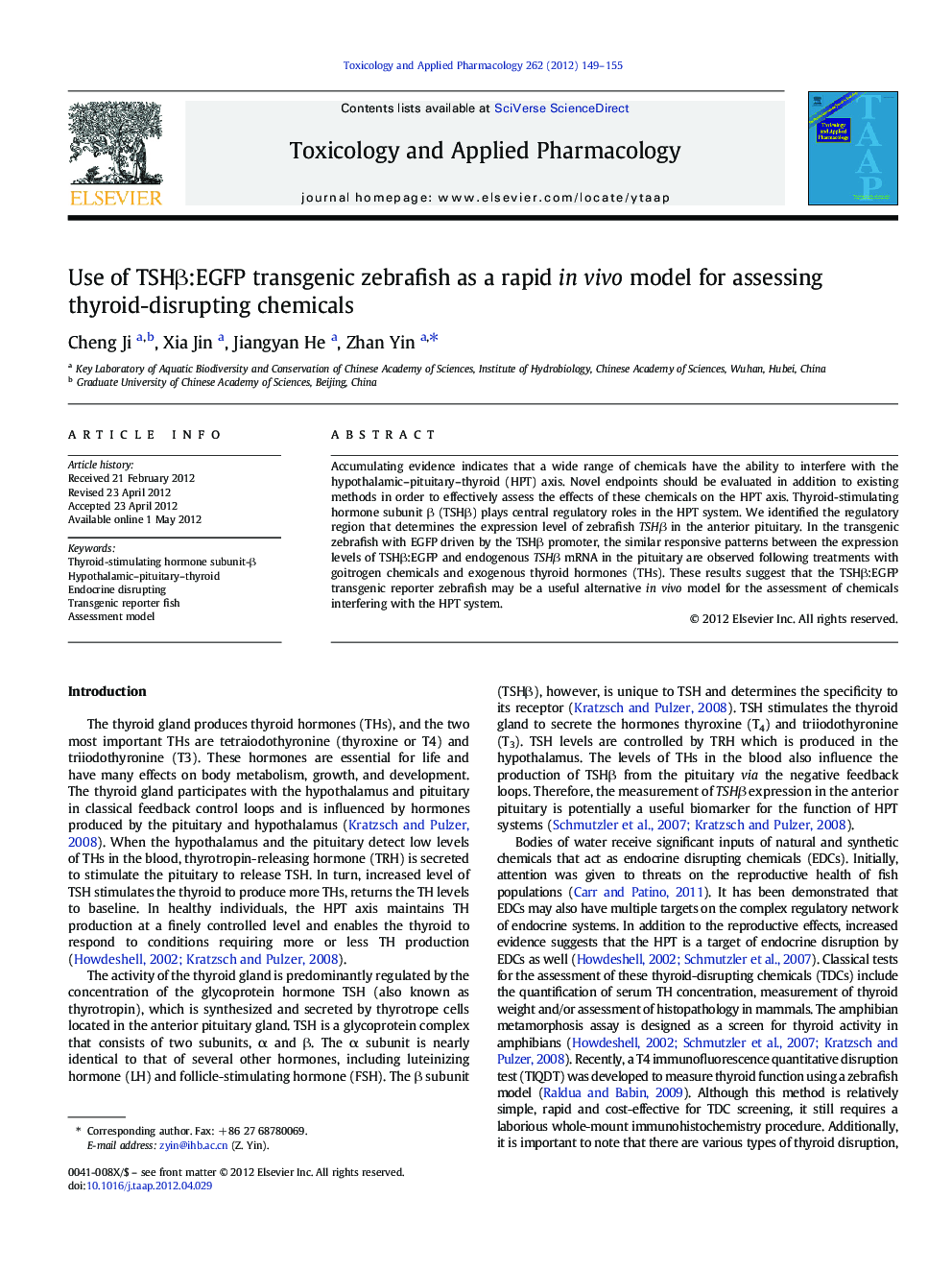| Article ID | Journal | Published Year | Pages | File Type |
|---|---|---|---|---|
| 5846734 | Toxicology and Applied Pharmacology | 2012 | 7 Pages |
Accumulating evidence indicates that a wide range of chemicals have the ability to interfere with the hypothalamic-pituitary-thyroid (HPT) axis. Novel endpoints should be evaluated in addition to existing methods in order to effectively assess the effects of these chemicals on the HPT axis. Thyroid-stimulating hormone subunit β (TSHβ) plays central regulatory roles in the HPT system. We identified the regulatory region that determines the expression level of zebrafish TSHβ in the anterior pituitary. In the transgenic zebrafish with EGFP driven by the TSHβ promoter, the similar responsive patterns between the expression levels of TSHβ:EGFP and endogenous TSHβ mRNA in the pituitary are observed following treatments with goitrogen chemicals and exogenous thyroid hormones (THs). These results suggest that the TSHβ:EGFP transgenic reporter zebrafish may be a useful alternative in vivo model for the assessment of chemicals interfering with the HPT system.
Graphical abstractDownload high-res image (162KB)Download full-size imageHighlights⺠The promoter of zebrafish TSHβ gene has been identified. ⺠The stable TSHβ:EGFP transgenic zebrafish reporter germline has been generated. ⺠The EGFP in the transgenic fish recapitulated the pattern of pituitary TSHβ mRNA. ⺠The transgenic zebrafish may be an in vivo model for EDC assessment.
